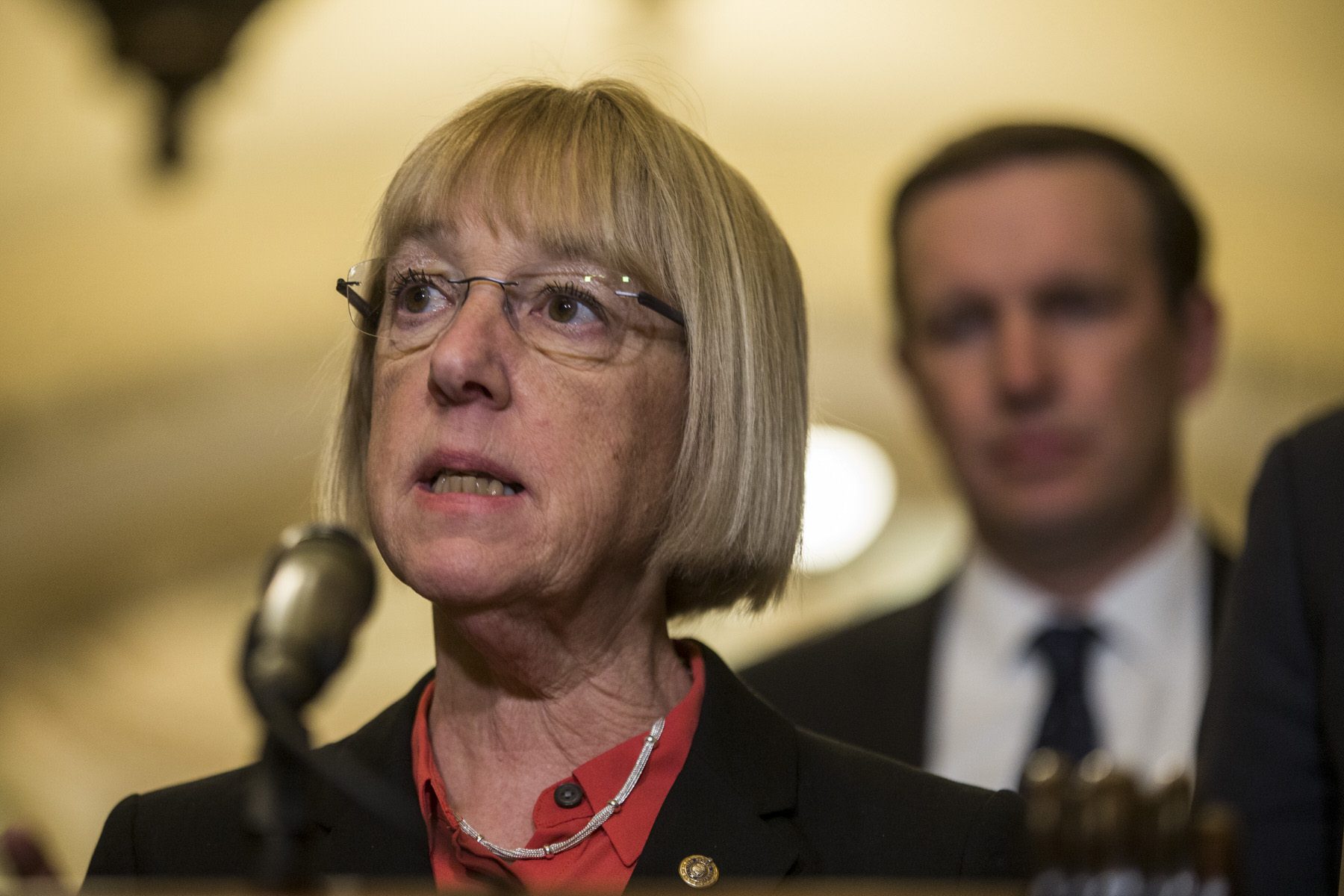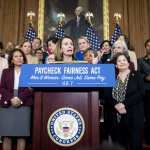The Women’s Retirement Protection Act didn’t stand a chance two years ago: The economy was doing well, and women’s financial security was far from the public’s mind. It quickly died after it did not make it to the floor for a vote.
But times have changed, and the bill’s sponsors are ready to try again. The COVID-19 pandemic devastated the economy and sparked a disproportionate financial crisis for women. Recent polling shows nearly half of women expect the past year to have a long-term impact on their finances. The Women’s Retirement Protection Act could address the retirement gap and bolster women’s financial security, according to more than two dozen Democrats who have signed on to the proposal.
In a memo shared first with The 19th, Sen. Patty Murray of Washington announced she and fellow Democrat Rep. Lauren Underwood of Illinois would reintroduce the Women’s Retirement Protection Act on Thursday to bolster women’s financial security.
In light of the pandemic, Murray said she was more confident the legislation will pass.
“I think there is a much broader understanding of the whole issue of economic security for women in this country, which has long been a problem even before the pandemic and its disproportionate impact on women,” said Murray, the chair of the Senate Health, Education, Labor and Pensions Committee. “We all know that women are a critical part of our country, and their economic security affects everyone.”
If passed and signed into law, the bill would expand spousal protections to prevent one spouse from making decisions that might undermine a couple’s retirement resources and provide more support through community organizations for survivors of domestic abuse seeking retirement benefits. More than 1.2 million couples get divorced in the U.S. each year, and retirement savings is one of the largest assets to be divided.
Currently only 1 in 5 part-time workers — who are twice as likely to be women — are eligible for a retirement plan. The bill would also expand retirement plan eligibility to workers after two years with an employer and increase access to financial tools and savings information.
According to 2020 data from the Board of Governors of the Federal Reserve System, about one quarter of non-retired adults don’t have a defined benefit plan or any retirement savings. Women, who tend to accrue lower lifetime wages because of unequal pay structures and caregiving duties, significantly lag behind men when it comes to retirement preparedness.
Women working full-time typically lag men in pay accrual by more than $400,000 over a 40-year career — a figure that is even larger for Black and Latina women, who might lose out on more than $1 million. The average woman has to work nearly a decade longer than a man to make up for the pay gap, according to the proposed legislation.
“Inequities, like investments, compound over time — which is why it is so critical we take action now to address how this pandemic and other challenges are undermining women’s financial futures,” Murray said in a statement.
For instance, the average annual Social Security benefit in 2019 for women 65 or older was about $13,500, compared with more than $17,300 for men. That money comes from a person’s lifetime earnings, and any job disruption affects the formula used to calculate benefits. When the pandemic swept the country, nearly 11 million jobs held by women disappeared within a couple months. Women were more likely to leave the workforce to care for loved ones, and women of color were most likely to lose their jobs. Many older women, who tend to live longer and alone, were forced into an isolation that only exacerbated socioeconomic challenges.
The measure is not a part of the so-called “human infrastructure” currently being debated on Capitol Hill. Despite Murray’s confidence, it is not clear if the measure has support from leadership and a clear path to passage in either the House or Senate, each narrowly controlled by Democrats.
Asked about broader support for the bill, Murray said: “I’m continuing to urge my Republican colleagues to support this. Nothing in this bill should be controversial. We already have spousal protections for pensions. We have spousal protections in the Thrift Savings Plan for federal employees—which includes Members of Congress. And we already have bipartisan bills to expand minimum participation requirements.”
Various advocacy groups, including the National Women’s Law Center, the Pension Rights Center and the American Association of Retired Persons, praised the proposed legislation.
“Women, especially women with low incomes and women of color, were facing a retirement crisis even before the pandemic,” Amy Matsui, Director of Income Security at the National Women’s Law Center, said in a statement. “Without swift and targeted action, women will feel the impact of the past year and a half of economic devastation for the rest of their lives.”
Michelle Connell, a chartered financial analyst and founder of Portia Capital Management, said women do need more support when it comes to closing the wage gap. But there’s only so much that legislation can do, she said.
Connell, who also taught university finance courses, said she had many women students with little interest in understanding their personal finances.
Connell said it’s “tough watching women” later in life lose their wealth to divorce or a spouse’s death. Women, who are far less likely than men to remarry, often struggle to recover their financial independence, she said.
While education alone won’t close the wage gap, Connell said it’s an important bridge to getting there. She encouraged women to focus on what they can control: maximize savings, live within a budget and take educated investment risk.
“You have to get in the schools and educate women from an early age,” said Connell, who is also a former finance professor. “Get them comfortable with investing… We need to make people more entrepreneurial and able to see opportunities to increase their standards of living and futures.”








